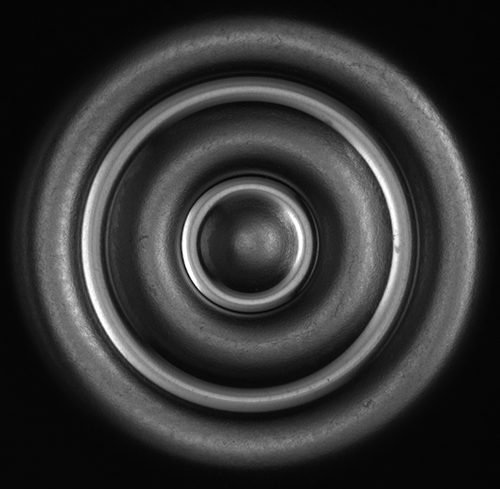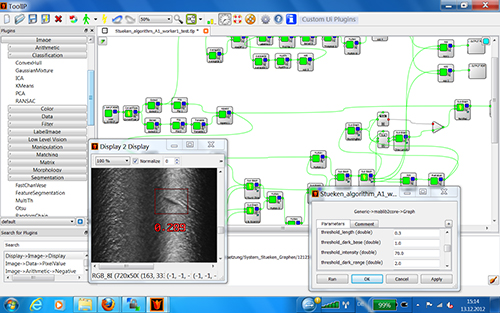The quality requirements for the mass produced components for the automobile industry are constantly increasing. This is certainly true for the manufacturing of deep drawn (thermoformed) components that exhibit especially difficult surface properties. In cooperation with partners Continental and Hubert Stüken, a specialist for deep drawing technology, ITWM has succeeded in developing a robust, highly accurate inspection system for brake shoes, which is suitable for use in demanding industrial applications.
As a result of the production methods, surface defects or special points of impact may form on the still untempered components. The automatic detection of these defects is necessary to warranty the tightness of the components when installed. A maximal inspection time of three seconds per component is required. The brake shoes typically consist of two pieces of steel, an inner and an outer, welded together. Impact points of a length of 0.3mm must be detected in specified areas of both sides.



